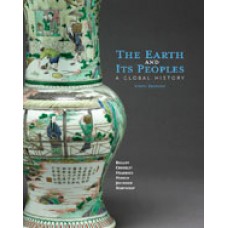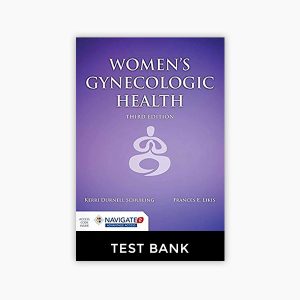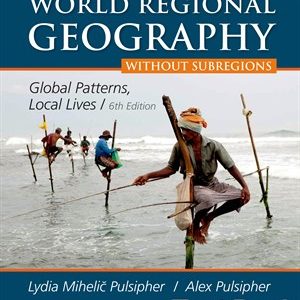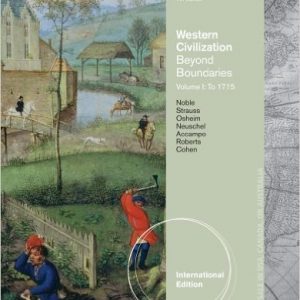This is completed downloadable of Test Bank for The Earth and Its Peoples A Global History, 6th Edition
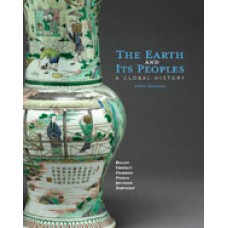
Product Details:
- ISBN-10 : 1285436792
- ISBN-13 : 978-1285436791
- Author:
Featuring a beautiful new design, THE EARTH AND ITS PEOPLES, Sixth Edition, presents world history in a balanced, global framework, shifting the focus away from political centers of power. This truly global world history book employs a fundamental theme-the interaction of human beings and the environment-to compare different times, places, and societies. Special emphasis is given to technology (in its broadest sense) and how technological development underlies all human activity.
Table of Content:
- Part I: The Emergence of Human Communities, to 500 B.C.E.
- Ch 1: Nature, Humanity, and History, to 3500 B.C.E.
- African Genesis
- Technology and Culture in the Ice Age
- The Agricultural Revolutions
- Life in Neolithic Communities
- Conclusion
- Ch 2: The First River-Valley Civilizations, 3500-1500 B.C.E.
- Mesopotamia
- Egypt
- The Indus Valley Civilization
- Conclusion
- Ch 3: The Mediterranean and Middle East, 2000-500 B.C.E.
- The Cosmopolitan Middle East, 1700-1100 B.C.E.
- The Aegean World, 2000-1100 B.C.E.
- The Assyrian Empire, 911-612 B.C.E.
- Israel, 2000-500 B.C.E.
- Phoenicia and the Mediterranean, 1200-500 B.C.E.
- Failure and Transformation, 750-550 B.C.E.
- Conclusion
- Ch 4: New Civilizations outside the West Asian Core Area, 2300 B.C.E.-350 C.E.
- Early China, 2000-221 B.C.E.
- Nubia, 2300 B.C.E.-350 C.E.
- Pastoral Nomads of the Eurasian Steppes, 1000-100 B.C.E.
- Celtic Europe, 1000-50 B.C.E.
- Conclusion
- Part II: The Formation of New Cultural Communities, 1000 B.C.E.-400 C.E.
- Ch 5: Greece and Iran, 1000-30 B.C.E.
- Ancient Iran, 1000-500 B.C.E.
- The Rise of the Greeks, 1000-500 B.C.E.
- The Struggle of Persia and Greece, 546-323 B.C.E.
- The Hellenistic Synthesis, 323-30 B.C.E.
- Conclusion
- Ch 6: An Age of Empires: Rome and Han China, 753 B.C.E.-330 C.E
- Rome’s Creation of a Mediterranean Empire, 753 B.C.E.-330 C.E.
- The Origins of Imperial China, 221 B.C.E.-220 C.E.
- Conclusion
- Ch 7: India and Southeast Asia, 1500 B.C.E.-1025 C.E.
- Foundations of Indian Civilization, 1500 B.C.E.-300 C.E.
- Imperial Expansion and Collapse, 324 B.C.E.-650 C.E.
- Southeast Asia, 50-1025 C.E.
- Conclusion
- Ch 8: Peoples and Civilizations of the Americas, from 1200 B.C.E.
- Formative Civilizations of the Olmec and Chavin, 1200-200 B.C.E.
- Classic-Era Culture and Society in Mesoamerica, 200-900
- The Postclassic Period in Mesoamerica, 900-1300
- Northern Peoples
- Andean Civilizations, 200-1400
- Conclusion
- Part III: Growth and Interaction of Cultural Communities, 300 B.C.E.-1200 C.E.
- Ch 9: Networks of Communication and Exchange, 300 B.C.E.-1100 C.E.
- The Silk Road
- The Indian Ocean Maritime System
- Routes across the Sahara
- Sub-Saharan Africa
- The Spread of Ideas
- Conclusion
- Ch 10: The Sasanid Empire and the Rise of Islam, 200-1200
- The Sasanid Empire, 224-651
- The Origins of Islam
- The Rise and Fall of the Caliphate, 632-1258
- Islamic Civilization
- Conclusion
- Ch 11: Christian Societies Emerge in Europe, 600-1200
- The Byzantine Empire, 600-1200
- Early Medieval Europe, 600-1000
- The Western Church
- Kievan Russia, 900-1200
- Western Europe Revives, 1000-1200
- The Crusades, 1095-1204
- Conclusion
- Ch 12: Inner and East Asia, 400-1200
- The Sui and Tang Empires, 581-755
- China and Its Rivals
- New Kingdoms in East Asia
- Conclusion
- Part IV: Interregional Patterns of Culture and Contact, 1200-1550
- Ch 13: Mongol Eurasia and Its Aftermath, 1200-1500
- The Rise of the Mongols, 1200-1260
- The Mongols and Islam, 1260-1500
- Regional Responses in Western Eurasia
- Mongol Domination in China, 1271-1368
- The Early Ming Empire, 1368-1500
- Centralization and Militarism in East Asia, 1200-1500
- Conclusion
- Ch 14: Latin Europe, 1200-1500
- Rural Growth and Crisis
- Urban Revival
- Learning, Literature, and the Renaissance
- Political and Military Transformations
- Conclusion
- Ch 15: Southern Empires, Southern Seas, 1200-1500
- Tropical Africa and Asia
- New Islamic Empires
- Indian Ocean Trade
- Social and Cultural Change
- The Western Hemisphere
- Conclusion
- Ch 16: The Maritime Revolution, to 1550
- Global Maritime Expansion before 1450
- European Expansion, 1400-1550
- Encounters with Europe, 1450-1550
- Conclusion
- Part V: The Globe Encompassed, 1500-1750
- Ch 17: Transformations in Europe, 1500-1750
- Culture and Ideas
- Social and Economic Life
- Political Innovations
- Conclusion
- Ch 18: The Diversity of American Colonial Societies, 1530-1770
- The Columbian Exchange
- Spanish America and Brazil
- English and French Colonies in North America
- Colonial Expansion and Conflict
- Conclusion
- Ch 19: The Atlantic System and Africa, 1550-1800
- Plantations in the West Indies
- Plantation Life in the Eighteenth Century
- Creating the Atlantic Economy
- Africa, the Atlantic, and Islam
- Conclusion
- Ch 20: Between Europe and China, 1500-1750
- The Ottoman Empire, to 1750
- The Safavid Empire, 1502-1722
- The Mughal Empire, 1526-1739
- The Russian Empire, 1500-1725
- The Maritime Worlds of Islam, 1500-1750
- Conclusion
- Ch 21: East Asia in Global Perspective
- East Asia and Europe
- The Imjin War and Japanese Unification
- Tokugawa Japan and Choson Korea to 1800
- From Ming to Qing
- Conclusion
- Part VI: Revolutions Reshape the World, 1750-1870
- Ch 22: The Early Industrial Revolution, 1760-1851
- Causes of the Industrial Revolution
- The Technological Revolution
- The Impact of the Early Industrial Revolution
- New Economic and Political Ideas
- The Limits of Industrialization outside the West
- Conclusion
- Ch 23: Revolutionary Changes in the Atlantic World, 1750-1850
- Prelude to Revolution: The Eighteenth-Century Crisis
- The American Revolution, 1775-1800
- The French Revolution, 1789-1815
- Revolution Spreads, Conservatives Respond, 1789-1850
- Conclusion
- Ch 24: Land Empires in the Age of Imperialism, 1800-1870
- The Ottoman Empire
- The Russian Empire
- The Qing Empire
- Conclusion
- Ch 25: Nation Building and Economic Transformation in the Americas, 1800-1890
- Independence in Latin America, 1800-1830
- The Problem of Order, 1825-1890
- The Challenge of Social and Economic Change
- Conclusion
- Part VII: Global Diversity and Dominance, 1750-1945
- Ch 26: Varieties of Imperialism in Africa, India, Southeast Asia, and Latin America, 1750-1914
- Changes and Exchanges in Africa
- India under British Rule
- Southeast Asia and the Pacific
- Imperialism in Latin America
- The World Economy and the Global Environment
- Conclusion
- Ch 27: The New Power Balance, 1850-1900
- New Technologies and the World Economy
- Social Changes
- Socialism and Labor Movements
- Nationalism and the Rise of Italy, Germany, and Japan
- The Great Powers of Europe, 1871-1900
- China, Japan, and the Western Powers
- Conclusion
- Ch 28: The Crisis of the Imperial Order, 1900-1929
- Origins of the Crisis in Europe and the Middle East
- The “Great War” and the Russian Revolutions, 1914-1918
- Peace and Dislocation in Europe, 1919-1929
- China and Japan: Contrasting Destinies
- The New Middle East
- Conclusion
- Ch 29: Revolutions in Living, 1900-1950
- New Technology outside the Industrialized World
- New Ways of Living in the Industrialized World
- A New India, 1905-1947
- Mexico, Argentina, and Brazil, 1917-1949
- Sub-Saharan Africa, 1900-1945
- Conclusion
- Ch 30: The Collapse of the Old Order, 1929-1949
- The Stalin Revolution
- The Depression
- The Rise of Fascism
- East Asia, 1931-1945
- The Second World War
- The Character of Warfare
- Conclusion
- Part VIII: Perils and Promises of a Global Community, 1945 to the Present
- Ch 31: The Cold War and Decolonization, 1945-1975
- The Cold War
- Decolonization and Nation Building
- Beyond a Bipolar World
- Conclusion
- Ch 32: The End of the Cold War and the Challenge of Economic Development and Immigration, 1975-2000
- Postcolonial Crises and Asian Economic Expansion
- The End of the Bipolar World
- The Challenge of Population Growth
- Unequal Development and the Movement of Peoples
- Technological and Environmental Change
- Conclusion
- Ch 33: New Challenges in a New Millennium
- Globalization and Economic Crisis
- The Question of Values
- Global Culture
- Index

